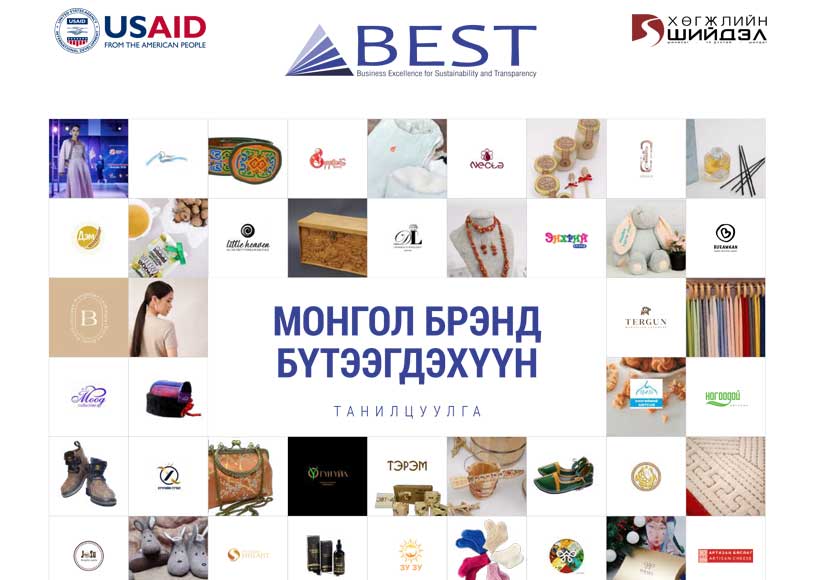
B.Danaasuren: Banks are interested in lending, but there are few companies that meet the requirements
Interview with Dr. V.Danaasuren, Lecturer, Department of Economics and Finance, Academy of Management. I heard that the epidemic has affected the economy, including manufacturing, the banking sector, and bank lending. Should we start with the question of exactly how the plague has affected businesses?
Ковид-19 цар тахлын хувьд ганц манай улсын эдийн засагт ч биш дэлхийн эдийн засагт нөлөөлж байна. Монгол Улсад бүртгэлтэй аж ахуйн нэгжүүдийн 70-80 хувь нь жижиглэн болон бөөний худалдааны үйл ажиллагаа явуулдаг. Худалдааны хувьд импортын барааг Монголынхоо зах зээлд зарах тухай л асуудал шүү дээ. Тэр утгаараа хил гааль жил орчмын хугацаанд хаалттай байсан нь худалдааны салбарт нөлөөлсөн. Түүнчлэн, хил гааль хаагдангуут импортын түүхий эд, материал ашиглаж дотооддоо үйлдвэрлэл явуулдаг аж ахуйн нэгжүүдэд ч хүндрэл гарсан. Ийм шалтгаанаас болж импортын түүхий эдийн хомсдол үүсэж, бараа материалын үнэ өссөн. Үүнийг дагаад үйлдвэрлэгчдийн бүтээгдэхүүний өртөг өсчихсөн. Өндөр өртгөөр үйлдвэрлэсэн бүтээгдэхүүнийг нь худалдан авах чадвартай иргэд ховор байна. Иргэд нэг талдаа худалдан авагч, нөгөө талдаа үйлдвэр, аж ахуйн нэгжүүдэд ажилладаг ажилтнууд. Хөл хориогоор үйлдвэрүүдийн үйл ажиллагаа хумигдаж эмийн сан, хүнсний үйлдвэр, хүнсний дэлгүүр гурваас бусад нь бүгд хаалгаа барьсан. Үйл ажиллагааг нь хязгаарласан аж ахуйн нэгжүүд ажилтнуудаа цомхотгохоос аргагүйд хүрсэн. Цомхотгоогүй зарим нь ажилчдадаа цалингүй чөлөө олгосон. Аж ахуйн нэгжүүдийн тухайд хамгийн гол зардал нь цалин, түүхий эд материалын зардал байдаг. Хүмүүс өдөр тутмын хэрэглээний бараагаа л худалдан авдаг болсноос хэрэглээгээ танаж, аж ахуйн нэгжүүдийн борлуулалт буурсан. Ингэж бүтээгдэхүүний түүхий эд багасаж, өртөг өссөн, бүтээгдэхүүний борлуулалт буурсан зэргээс хамаарч үйлдвэрлэл хумигдаад байна.
It will be difficult for businesses to obtain loans from banks due to difficulties in their operations. As a result, the amount of loans provided to small and medium enterprises has sharply decreased. Would you like to share your research results?
2021 оны эхээр судалгаа явуулахад судалгаанд оролцсон аж ахуйн нэгжүүдийн 50-ис илүү хувь нь зогссон байна. Үйл ажиллагаа нь зогссон аж ахуйн нэгжүүдийн дийлэнх нь үйлдвэрлэлийн салбарынхан гээд харахаар нийт нийлүүлэлт болон эрэлтэд тодорхой хэмжээгээр нөлөөлж байна гэсэн үг.
Is the ability of small and medium enterprises to meet the requirements of bank loans also reduced?
Судалгаанаас харахад жижиг, дунд үйлдвэрлэлийн зээлийн эрэлт нь буурсан дүр зураг гарсан. 2020 оны сүүлээр жижиг, дунд бизнес болон аж ахуйн нэгжүүдэд олгосон зээлийг өмнөх оных нь мөн үетэй харьцуулахаар 30-40 орчим хувиар буурсан байгаа юм. Жижиг, дунд үйлдвэрүүдийн хувьд 2020 он үйл ажиллагаа нь хумигдсан жил байсан учраас хөрөнгө оруулалтын зээл гэж бараг авахаа больсон. Бүр тодруулж хэлбэл цаашаа хөгжих, үйл ажиллагаагаа тэлэх тал дээр анхаарах боломжгүй болсон гэсэн үг. Амь зогоосон эргэлтийн хөрөнгийн зээлийг л бага хэмжээгээр авч байна. Гэхдээ тэр зээлийн эрэлт нь ч багассан. Энэ нь жижиг, дунд бизнесүүд үйл ажиллагаагаа хумьсны нэг илрэл юм. Үйл ажиллагаа нь хумигдсан учраас зээл авах эрэлт нь банкин дээр багассан гээд ойлгож болно.
Collateral has been a problem before. Does that mean it got worse during Covid's time?
Банкны шаардлагыг хангадаг жижиг, дунд үйлдвэрүүдийн тоо буурсан нь судалгааны үр дүнгээс тодорхой харагдаж байгаа. Банкны эдийн засагчдаас асуулга судалгаа авахад жижиг, дунд үйлдвэрүүд банкны зээлийн барьцааны шаардлагыг улам л хангаж чадахаа больсон гэж тодотгосон.
Apart from collateral, what other problems do businesses have?
Ковидын үед улам бүр дордсон нь судалгаагаар тодорхой болсон. Жижиг, дунд үйлдвэрүүд өмнө нь авсан зээлээ төлж чадахгүй шалтгаанаар дахиж зээл авах боломжгүйд хүрч байгаагаас гадна ахиж зээл авъя гэсэн ч барьцааны шаардлагыг хангаж чадахгүй гэсэн асуудалтай нүүр тулаад эхэлчихсэн.
What do we need to do to solve all these problems in a short period of time, and what would you emphasize if the research offered a specific solution?
Банкнуудын тухайд зээл олгох сонирхол байгаа ч шаардлага хангах аж ахуйн нэгж ховор байна. Барьцаа хөрөнгөнөөс гадна ашиг орлогоо нотолж чадахгүй аж ахуйн нэгжүүд олон байх жишээний. Татвараас зайлсхийхийн тулд зардлаа ихэсгээд орлогоо багасгадаг асуудал бий. Дийлэнх нь тэг баланстай аж ахуйн нэгжүүд байна л даа. Татвараас зайлсхийж яваа нь аж ахуйн нэгж талдаа ашигтай юм шиг боловч, дунд болон урт хугацаанд ирээдүйг нь баллаад байна. Тайлангаа алдагдалтай гаргасан компанид янз бүрийн хөнгөлөлттэй зээлийг банк өгөх аргагүй болчхож байгаа юм.
This is exactly what small and medium enterprises are dissatisfied with. Which industry of SMEs should we support and provide loans to? is the question I understand that the Ministry of Finance and the Bank of Mongolia need to clarify. What other solutions are there to support businesses?
Санхүүгийн бүртгэл тооцоогоо цэвэршүүлэх, нэгдмэл тайлантай болох, ашиг орлогоо нотолдог болох шаардлагатай байна. Үүнээс гадна банкны эдийн засагчдын онцолсон бас нэг асуудал бий. Аж ахуйн нэгжүүд зээлээ зориулалтын дагуу зарцуулах эсэх нь тодорхойгүй, зээлээ авчхаад өөр зүйлд зарцуулаад явах эрсдэлтэй, зээлийн зарцуулалтад банкны зүгээс хяналт тавих тал дээр учир дутагдалтай гэх мэт асуудал байгаа юм билээ. Дахиад хэлэхэд аж ахуйн нэгжүүд санхүүгийн тайлангаа цэвэр байлгахад анхаарах хэрэгтэй байна. Ингэж байж л банкнууд тухайн компанийн үнэн зөв тайланд тулгуурлаж хөрөнгө оруулалтын зээл олгох боломжтой болно. Аж ахуйн нэгжүүд ямар нэгэн үйлдвэр барих, технологи нэвтрүүлэхээр зээл авахаар хандлаа гэж бодъё. Энэ тохиолдолд бизнесийн төсөл бичих болно оо доо. Гэтэл төсөл нь ашигтай, алдагдалтай байх эсэхийг өөрсдөө тооцоолж чаддаггүй. Тийм учраас төслийнхөө ашигтай эсэхийг банкны эдийн засагчид баталж чаддаггүй асуудал байна. Зээлийн эдийн засагчийн хувьд ашигтай үгүй нь мэдэгдэхгүй төсөлд зээл өгөхөд эрсдэлтэй шүү дээ. Тэгэхээр аж ахуйн нэгжүүд өөрсдөө чадавхжих хэрэгтэй байна. Судалгаанд хамрагдсан аж ахуйн нэгжүүдийн 97 хувь нь өөрийн гэсэн нягтлан бодогчгүй, санхүүгийн тайлангүй гэх мэт шалтгаанаар эзэд нь компанийнхаа санхүүгийн хувьд юу болоод байгааг нарийн мэддэггүй асуудал анзаарагдсан. Нарийн судалгаа, төлөвлөлтгүйгээр бизнестээ их мөнгө оруулаад, мөнгө зөв удирдаагүйгээс ашиг олж гавьдаггүй, 20-30 жилийн хугацаанд зээлээс зээлийн хооронд амьдарч байна гэх мэт асуудлууд байна. Энэ бүх асуудлын гол гаргалгаа нь аж ахуйн нэгжүүдийн эзэд өөрсдөө санхүүгийн мэдлэгтэй болж, мэргэжлийн хүмүүстэй болох хэрэгтэй байгаа юм. Зардал нь өссөн шалтгаан, орлого олчхоод шингээж чадахгүй байгаагийн учир, хэчнээн хэмжээний зээл авбал төлөөд явах боломжтой зэргийг нарийн тооцдог санхүүгийн боловсролтой болчихвол энэ бүх асуудал шийдэгдэнэ.
Энэ бүх асуудлыг богино хугацаанд шийдэхийн тулд яах ёстой юм бол, судалгаа хийсэн газрын хувьд ямар нэг тодорхой шийдэл гарц санал болгооч гэвэл та юуг онцлох вэ?
Яг энэ чиглэлээр аж ахуйн нэгжүүдэд зориулсан жижиг программ хангамж бүтээж хэрэглээнд сайн нэвтрүүлж чадвал санхүүгийн шийдвэр гаргалтад чухал нөлөө үзүүлнэ. Технологийн эринд амьдарч байгаа өнөө үед ийм программ хангамжийг хэрэглээнд нэвтрүүлэх хэцүү биш. Тухайн программ хангамж орлого, зарлагыг бодитойгоор бүртгэдэг бол банкнууд тогтвортой бизнесүүдэд барьцаа шаардахгүйгээр зээл олгох боломж нээгдэнэ. Мөн найдвартай компаниудын бизнесийн төслийн ирээдүйн орлого нь зээлийн барьцаа болоод явчих төслийн санхүүжилт ч нэвтрэх боломжтой. Энэ тохиолдолд аж ахуйн нэгжүүд заавал үл хөдлөх хөрөнгө барьцаалах шаардлагагүй болно гэсэн үг. Дахин онцлоход аж ахуйн нэгжүүдэд чадваржих шаардлага, эрэлт байна. Миний хувьд АНУ-ын Олон улсын хөгжлийн агентлаг (USAID)-ийн “Жижиг, дунд бизнесийн тогтвортой хөгжлийг сайжруулах, ил тод байдлыг нэмэгдүүлэх” BEST хөтөлбөрийг яг энэ тал дээр эерэг нөлөө үзүүлж чадна гэж харж байгаа. Банк болон аж ахуйн нэгжүүд өөр хоорондоо хэл амаа олж чадахгүй байгаа асуудлуудын тухай та бид хоёр сая ярилаа. Банкны шаардлага хангаж чадахгүй яваа асуудал дээр нь аж ахуйн нэгжүүдэд сургалт, зөвлөгөө өгч, тодорхой үйлчилгээ үзүүлж, зээлийн шаардлагыг нь хангахад дэмжлэг үзүүлэх гүүр байгууллага шаардлагатай. Тэр нь BEST хөтөлбөр гэж би хувьдаа харж байна.
.
Энэ асуудлыг банкны удирдлагууд их гярхай ажигласан байна лээ. Жижиг дунд үйлдвэрлэлд зориулсан жилийн 3 хувийн хүүтэй, 3 жилийн хугацаатай зээл энэ оны 3 дугаар сараас олгож эхэлсэн. Энэ зээлийг бүх аж ахуйн нэгж авахыг хүсэж байгаа. Тэр утгаараа банкнуудад их олон хүсэлт ирсэн. Хамгийн гол нь эх үүсвэрийг банкнууд өөрсдөө гаргана. Гэтэл банкны эх үүсвэр хангалттай биш. Үүнээс гадна Монголбанк, Сангийн яамнаас хамаарсан өөр асуудлууд ч байна. Наад захын жишээ гэхэд л зээлийн зориулалтыг тодорхой болгох асуудал байна. Хэдээс хэдэн төгрөгийн борлуулалттай, аль салбарын, ямар хэмжээний аж ахуйн нэгжид олгох нь өнөөг хүртэл тодорхойгүй, жижиг, дунд үйлдвэрлэл гэсэн ерөнхий шаардлага л тавигдсан байна. Нэг талаас аль салбарын, ямар хэмжээний жижиг дундыг хамруулах нь тодорхой биш, нөгөө талаас жижиг, дунд үйлдвэрлэгчид барьцаа хөрөнгө шаардлагыг хангахгүй байгаа учраас том компанийн охин компаниуд, өөрөөр хэлбэл үйл ажиллагааны түүх сайтай, барьцаа хөрөнгө ихтэй компаниуд уг зээлийг авах магадлал өндөр болчхож байна. Иймд дэмжих шаардлагатай байгаа үйлдвэрлэлийн чиглэлийн жижиг дундуудад зорилтот зээл нь хүрч чадахгүй байна.
Жижиг, дунд үйлдвэрлэгчид яг үүнд сэтгэл дундуур байдаг л даа. Таны ярианаас ямар салбарын жижиг дундуудад зээлийг олгох вэ? гэдгээ Сангийн яам, Монголбанкнаас тодорхой болгох ёстой гэх мэт асуудлууд байгаа гэж ойлголоо. Үйлдвэрлэгчдийг дэмжих өөр ямар гарц, шийдэл байна вэ?
Тийм ээ, сая хэлсэн шалтгаануудаас болж жижиг дунд үйлдвэрлэгчдэд хаягласан зээл нь дундаас дээш хэмжээтэй том бизнесийг дэмжээд байна л даа.Гарц шийдлүүд мэдээж бий. Тухайлбал, Засгийн газраас хэрэгжүүлж буй 10 их наяд төгрөгийн хөтөлбөрийн хүрээнд нэг санал дэвшүүлэхэд залуучуудын хөдөлмөр эрхлэлт, ажиллах, амьдрах хэв маягийг дэмжих зориулалттай 500 тэрбумын тэтгэлэг бий. Энэ мөнгийг залуучуудын эрүүл амьдралын хэв маягийг өөрчлөх фитнес гэх мэтийн зүйлд түр хугацаанд зарцуулснаас ажлын байр бий болгож яваа аж ахуйн нэгжүүдтэйгээ холбочихвол илүү өгөөжтэй. Аж ахуйн нэгжүүдийн хувьд санхүүжилтээс гадна хүний нөөцийн дутагдал гэсэн асуудалтай байнга нүүр тулдаг. Нэг талд компаниудад ажиллах мэргэжлийн хүний нөөц хомсдолтой, нөгөө талд залуус их сургууль төгсөөд ажилгүй байна. Тэднийг холбох нэг гарц бол ажилтан бэлтгэх сургалтууд, Мэргэжлийн сургалт үйлдвэрлэлийн төвөөр ч юм уу дамжуулан эдгээр хэрэгцээг хангаж болно. Эсвэл компаниуд өөрсдөө ажилтнаа бэлтгээд, бэлтгэсэн ажилтантайгаа тогтвортой ажлын байрны гэрээ байгуулсан аж ахуйн нэгжид дээрх тэтгэлгийг олгох байдлаар жижиг, дунд үйлдвэрлэлд хүний нөөц болон санхүүгийн талаас нь урамшуулал үзүүлэх хувилбар байж болно. Ингэвэл залуус тогтвортой ажил орлоготой болно.
Хөнгөлөлттэй зээлд хамрагдсан ч хүний нөөцгүй гэсэн асуудал аж ахуйн нэгжүүдийн нийтлэг зовлон. Энэ асуудлыг нь шийдээд өгчихвөл жижиг дунд үйлдвэрлэлийг бодит утгаар нь дэмжсэн шийдэх болох л юм байна…?
.
.
Бид судалгааныхаа хүрээнд үүнд анхаарсан. Банк бус санхүүгийн байгууллага хадгаламж татан төвлөрүүлдэггүй учраас өөрсдөө богино хугацааны бонд гаргах ч юм уу, эсвэл банкнуудаас зээл авч түүнийгээ жижиг дундуудад зээл болгож өгдөг юм байна. Жижиг, дунд аж ахуйн нэгжүүд, ялангуяа бичил аж ахуйн нэгжүүд (1-9 ажилчинтай) эцсийн найдвар болгож ББСБ-д ханддаг. ББСБ-ын зээлийн хүү өндөр байдаг нь банкнууд тэднийг өрсөлдөгчийн нүдээр харж арай өндөр хүүтэй зээл өгдөгтэй ч холбоотой. Мэдээж эх үүсвэрийнх нь хүү өндөр тул ББСБ түүнээсээ өндөр хүүгээр жижиг, дундуудад зээл олгож таарна.
.
Бичил бизнес эрхлэгч, тухайлбал жижиг оёдлын цех байлаа гэхэд банкны шалгуурыг хангаж чаддаггүй. Наад зах нь орлогоо нотолж чаддаггүйгээс гадна барьцаа хөрөнгөгүй гэсэн том асуудал бий. Иймд нь эргэлтийн хөрөнгөө шийдэхийн тулд ББСБ-аас өндөр хүүтэй зээл авахаас өөр аргагүйд хүрдэг. Тэгэхээр бичил, жижгүүдийг дэмжье гэж байгаа бол банк бусуудад боломж олгох хэрэгтэй. Бичлүүд нийт аж ахуйн нэгжийн 88 хувийг бүрдүүлдэг. Зарим ББСБ энэхүү хэрэгцээг олж хараад зөвхөн зээл олгох гэлтгүй харилцагчдадаа сургадаг юм байна. Инвескор ББСБ л гэхэд харилцагчдадаа сард найман цагийн сургалтын эрх өгдөг юм билээ. Мэргэжлийн хүмүүсээр сургалт явуулж, харилцагчдаа хооронд нь холбох арга хэмжээ авч байгаагаа ярьж байсан. Ингэснээр өртгийн сүлжээгээр хоорондоо холбогдох нөхцөл бүрдэж байгаа юм. Жишээ нь нэг нь даавуу худалдаж, нөгөөх нь даавууг нь аваад юм оёж, оёсон зүйлийг нэг дэлгүүр зардаг гэх мэт харилцан хамааралтай компаниуд тухайн өртгийн сүлжээг бүрдүүлдэг. Эдгээрийг тухайн ББСБ холбож өгөхийг хичээж байх жишээний. ББСБ-ын үйл ажиллагаа нь Монголбанкны зохицуулалтаар явагддаггүй учраас банкнуудыг бодвол шалгуур нь бага. Шалгуур бага учраас харьцангуй богино хугацаанд бага шаардлага тавиад нэг их барьцаа шаардахгүй зээл олгодог. Харилцагч талдаа ч хүнд суртал нь бага байдаг. Гол нь хүү өндөр учраас жижиг, дунд үйлдвэрлэгчид тэдэнд хандаж чаддаггүй байна. Давтан хэлэхэд бичил бизнесийг дэмжье гэвэл банкнаас гадна ББСБ руу ч гэсэн анхаарал хандуулж, санхүүжилтийн асуудалд нь уян хатан дэмжлэгээ үзүүлбэл зөв шийдэл байж болох юм.
.
Энэ онд баталсан Банкны хуулийн томоохон шинэчлэл нь банкнууд хувьцаат компани болох тухай асуудал юм. Системийн нөлөө бүхий таван банк олон нийтэд хувьцаагаа гаргаж нээлттэй хувьцаат компани болох шаардлага тавигдсан. Жижиг банкнуудын хувьд нээлттэй болох уу, эсвэл хаалттай хэлбэрээр хувьцаа гаргах уу гэдэг нь тэдний сонголт. Системийн таван банкны хувьчлалын үйл ажиллагаа ирэх жил гаруйн хугацаанд явагдаж, банкнууд ямар нэгэн байдлаар хувьцаат компани болох нь. Та их зөв асуулаа. Хувьцаат компани болоход хамгийн чухал нь банкнууд бэлэн үү?, хөрөнгийн зах зээлд хувьцааг борлуулахад хөрөнгийн зах зээл бэлэн үү? гэсэн хоёр том асуулт гарч ирж байна. Банкны хувьд засаглал нь харьцангуй сайн. Жил болгон аудитаар ордог. Эзэмшлийн бүтэц нь боломжийн банкнууд ч бий. Хамгийн гол асуудал нь хөрөнгийн зах зээл маань жижигхэн. Манай санхүүгийн зах зээлийн 95 хувь нь банкнуудын хөрөнгө байдаг.
.
Жижиг зах зээлээс ийм их хэмжээний хөрөнгө оруулах хөрөнгө оруулагч бий юу? гэсэн асуулт гарч ирж байгаа л даа. Энэ талаар банкны удирдлагуудаас судалгааны хүрээнд ярилцлагын аргаар “Банкнуудад хөрөнгө оруулагч олдохоор байна уу? Ямар асуудал тулгарч болох вэ?” гэж асуухад “Хөрөнгө оруулагч хамгийн том асуудал” гэж онцолсон. Нэгдүгээрт хөрөнгийн зах зээлд оруулах хэмжээний мөнгөтэй хүмүүс дотоодод тун цөөн. Хоёрдугаарт банканд хэдэн тэрбумын хадгаламжтай хүмүүс бүгдээрээ хөрөнгийн зах зээл рүү орох уу? гэдэг нь эргэлзээтэй. Тэр хүмүүс “Эрсдэл хүлээмээргүй байна. Банкандаа мөнгөө хадгалуулж байя” гэвэл хүчлэх боломжгүй. Бусад улс орнуудад том хувьцаат компани болоход оролцдог хамгийн гол зүйл нь хөрөнгө оруулалтын сан байдаг. Энгийнээр хэлбэл хөрөнгө оруулагчдын мөнгийг нэгтгэж том сан бүрдүүлээд түүгээрээ институтийн хөрөнгө оруулагч болж байгаа хэлбэр л дээ. Манайд хөрөнгө оруулалтын сангийн хууль 2013 онд батлагдсан ч яг банкнуудад хөрөнгө оруулах хэмжээний томоохон сан одоохондоо алга. Ингээд харахаар банкны хувьцааг авах хэмжээний хөрөнгө оруулагч дотоод талаасаа ховор байна.
Гэхдээ иргэдэд хувийн хөрөнгө оруулалтын сангаар дамжиж банкны хувьцаа эзэмшигч болох боломж бий. Зарим сангууд ийм зорилгоор ажиллаад эхэлчихсэн…?
Иргэд хөрөнгө оруулалтын сангаар дамжиж банкны хувьцааг авч болно. Гэхдээ иргэдэд хөрөнгийн зах зээлийн талаар ойлголт хомс байна. Зарим нэг хүнээс асуухад блокгүйн, ардкойн гэх мэт богино хугацааны эргэлт, ашиг хонжооны шинжтэй зүйлстэй андуурчихсан явах жишээний. Хувьцаа гэдэг бол насан туршдаа эзэмшээд үр хүүхдэдээ өвлүүлж болох урт хугацааны хөрөнгө оруулалтын хэрэгсэл. Энэ онцлогийг нь ойлгохгүйгээр банкнуудын хувьцааг авчхаад үнэ хүрэхээр нь заръя гэсэн сонирхолтой хүмүүс олон байх магадлалтай. Ийм сонирхолтой хүн олон бол банкны үйл ажиллагаа тогтвортой явахад эергээр нөлөөлж чадахгүй. Ингээд харахаар хөрөнгө оруулагч талаасаа гол найдвар бол гадаадын хөрөнгө оруулалт болчхож байгаа юм. Ер нь хамгийн сайн хөрөнгө оруулагч бол гадаадын институтийн хөрөнгө оруулагч. Ийм хөрөнгө оруулагчийг олж чадвал маш сайн. Дойчи банк гэхэд л дэлхийн хөрөнгийн зах зээл дээр хамгийн том хөрөнгө оруулагч. Иймэрхүү том институтийн хөрөнгө оруулагч олж ирж чадвал ямар нэгэн гаднын хувь хүний эзэмшилд орохгүй. Институтийн хөрөнгө оруулагчид мэргэжлийн тоглолт хийдэг учраас компанийн үйл ажиллагаа дотоод руу нэг их орохгүй гэх мэт давуу талтай.
.
Нэг хөрөнгө оруулагчид ноогдох хэмжээг 20 хувиар хязгаарлачихаар институтийн хөрөнгө оруулагч буюу тухайн банкны засаглалыг сайжруулъя, хяналтын багцыг авъя гэсэн хөрөнгө оруулагчдад орж ирэх сонирхол төрөхгүй. Учир нь Монгол улсын Компанийн хуулиар 34 буюу түүнээс дээш хувьтай байж хяналтын багцыг эзэмшдэг. Хяналтын багц эзэмшиж буй хувьцаа эзэмшигч ТУЗ-д өөрийнхөө төлөөлөгчийг томилж ТУЗ-өөр дамжуулж компанийн стратегийн шийдвэр гаргалтад нөлөөлөөд явдаг. Өөрөөр хэлбэл 34 хувь гэдэг багцыг хэн ч авах боломжгүй учраас гаднын институтийн хөрөнгө оруулагчид нэг их сонирхохгүй болов уу. Богино хугацааны ашиг хонжоо хайсан хөрөнгө оруулагч, хувь иргэдэд банкны хувьцаа авах сонирхол илүү төрөх байх. Богино хугацаанд ашгаа өсгөөд зарна гэсэн сэдлээр харж хувьцаа худалдаж авбал хэвийн явж байсан банкны үйл ажиллагаа доголдож, харилцагчдад банк дампуурах нь гэсэн шок үүсэх ч эрсдэл бий. Жил гаруйн ийм богино хугацаанд банкуудаа хувьчилна гэвэл олон хөрөнгө оруулагч олдохгүй байх магадлалтай. Бас хөрөнгийн зах зээлийн дэд бүтэц, төлбөр тооцооны систем энэ том гүйлгээг хийхэд бэлэн үү гэдэг асуудал бий. Үүн дээр эрхзүйн зохицуулалтууд сайн хийгдэх ёстой. Жижиг хувьцаа эзэмшигчдийн эрх ашгийг хамгаалсан заалт, дүрэм журмууд орохгүй бол хөрөнгө оруулагчид банкны хувьчлал руу орохгүй. Наад захын жишээ нь хөрөнгийн зах зээлд хувьцаагаа арилжаалдаг компаниудын 10 хүрэхгүй хувь нь жилийн эцэст ноогдол ашиг өгч байна. Бусад хувьцаат компаниуд ноогдол ашиг олгодоггүй шалтгаан нь жижиг хувьцаа эзэмшигчдийн эрх ашиг гэдэг зүйл яригдахгүй байгаатай ч холбоотой юм. Өөрсдөө ТУЗ-дөө ороод шийдвэрээ гаргачихдаг учраас жижиг хувьцаа эзэмшигчдийг тоодоггүй. Жижиг хувьцаа эзэмшигчдийг тоодоггүй хуулийн зохицуулалттай нөхцөлд банкны хувьчлалд жижиг хувьцаа эзэмшигчид орох уу гэдэг их эргэлзээтэй.
.
Арилжааны банкны удирдлагууд хувьцаат компани болох нь зөв шийдвэр гэж байгаа. Гэхдээ санхүүгийн системийн 95 хувийг бүрдүүлж байгаа банкны салбарыг богино хугацаанд бүгдийг нь хувьцаат компани болго гэж тулгах нь эрсдэлтэйг онцолж байна. Богино хугацаанд ямар ч бэлтгэлгүйгээр хувьчилбал нэр төдий хувьчлал болох вий гэсэн болгоомжлол байгаа нь анзаарагдсан.
.
.






